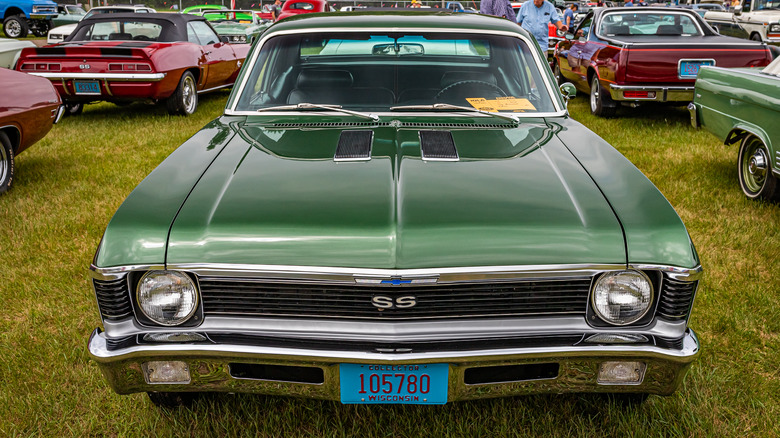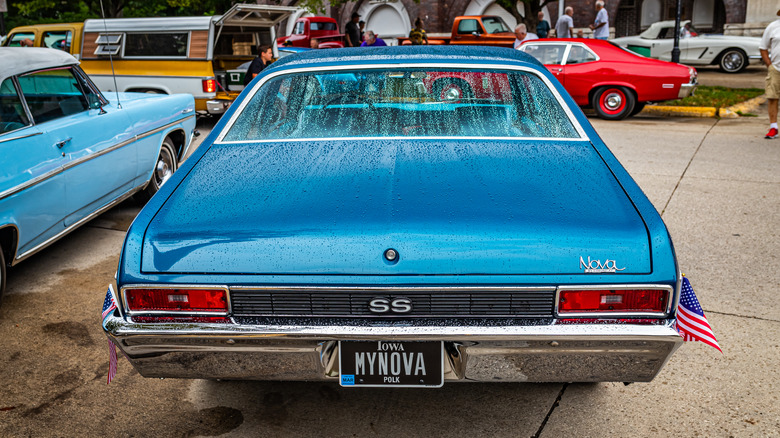
Different_brian/Getty Images
The line that graphs the appeal of the speedy Chevy Nova throughout the nameplate’s history is a jagged one, beginning in 1962 when Nova was used to label the uppermost trim level for the Chevy II compact sedan. The Nova’s appeal peaked along with muscle car production in the late ’60s, and plunged sharply with the introduction of a hatchback version in 1973. The Nova badge was resurrected in 1985 as part of GM’s partnership with Toyota, but the Corolla-based NUMMI Nova only lasted a few years before becoming the long-forgotten and discontinued Geo Prizm.
There is a long-held myth that the Nova didn’t sell well in Spanish-speaking countries because the name translates to «doesn’t go,» but the Nova was actually a strong seller in Central and South America, and a Spanish speaker would more commonly say «No camina» or «no funciona» to describe a broken-down vehicle.
During its heyday in the Nixon years, the Nova was one of the most potent muscle cars in the market, thanks to a lineup of beefy V8 engines. 1969 was the first year the Nova name stood alone without having to tag along on the end of the Chevy II moniker, and that was also the first time that Chevy’s 396-cubic-in V8 appeared under its hood. That engine came in 350 and 375 hp versions, and in 1970 the engine options were expanded beyond those two 396s.
1970 Nova engines ranged from 90 to 300 horsepower

Different_brian/Getty Images
The Nova saw some minor style changes between the 1969 and 1970 model years, including new side marker lights and taillight lenses. 1970 was also the throaty swan song for the 396-cubic-in V8, as a 350-cubic-in motor with 300 hp became the top engine option starting in 1971. 1970 Novas could also be purchased with a 402-cubic-in V8, which was actually the 396 bored out to add the additional six inches. Those engines were labeled as «Turbo-Jet» 396s and the two versions produced 350 and 375 hp. The «Turbo-Fire» 350 made its appearance that year, in three iterations producing 200, 250, and 300 hp.
Although there were still plenty of high-powered V8s available in the Nova, 1970 was also a sad indicator of the model’s impending demise as a true road-going beast. With American car buyers becoming increasingly concerned about fuel consumption, Chevy saw the need to provide some more miserly engine options in the Nova. The weakest of those was the «Super-Thrift» 153-cubic-in I4 that produced just 90 hp, a full 12 horses less than the I4 in the 1970 Toyota Corolla 1600.
In between the anemic Super-Thrift I4 and the still-impressive V8s, Chevy offered Nova buyers two «Turbo-Thrift» straight sixes that, despite the name, were naturally aspirated like the Nova’s other engines. The 230-cubic-in I6 produced 140 hp and the 250-cubic-in version was 10 horses stronger.